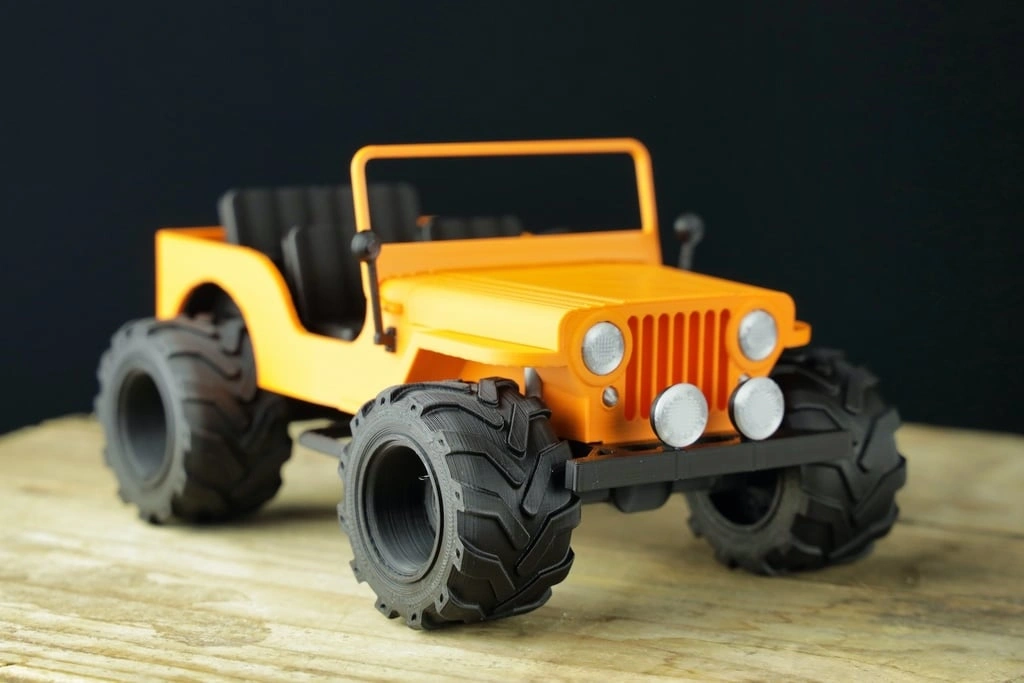All You Need to Know: Auto Leveling 3D Printer
Oct 26,2023 | 3D4Create
I. Introduction
In 3D printing, a level print bed is crucial for good first layer adhesion and preventing warped or failed prints. However, perfectly manual leveling the bed takes time and rarely achieves great accuracy.
This is where auto bed leveling comes in - special sensors and software automatically measure and compensate for any unevenness or tilt. This guide will explore the types of auto bed leveling systems, benefits over manual leveling, how they work, calibration, and usage tips.

II. What is Auto Bed Leveling?
Auto bed leveling refers to 3D printer systems that automatically measure the print bed’s tilt and deformation then physically or digitally compensate for it. This ensures every first layer gets ideal squish and adhesion across the entire bed, regardless of any imperfections.
This prevents the user from needing to manually adjust the bed knobs and iteratively print test patterns. The printer handles it automatically!
III. Types of Auto Bed Leveling
There are several sensor methods used for auto leveling:
- Inductive Probing - Uses an inductive sensor mounted on the print head carriage to detect bed height variations. It sends electromagnetic pulses to the metal print surface to map deviations.
- Optical Probing - Employs a camera to visually map the print bed geometry based on the position and focus of the print surface. Requires good lighting.
- Capacitive Probing - Measures electric capacitance between a sensor and print bed coating to map surface heights. Can detect non-conductive beds.
- Servo Probing - Uses a servo motor to lower and raise a mechanical switch probe at set points on the bed to map heights.

EasyThreed Minnie Auto-Leveling 3D Printer
IV. Auto vs. Manual Leveling
Auto leveling provides major benefits over tedious manual processes:
- Precision down to 0.1mm resolution in bed compensation, far better than manual knob turning can achieve.
- Ease of use with no more adjusting knobs, printing test patterns, or starting prints over and over to get a level bed. Fully automated.
- Drawbacks include added cost and complexity. Mechanical probes also wear over time affecting accuracy.
V. Implementing Auto Bed Leveling
Auto leveling can be added via:
- Integrated systems pre-installed by the manufacturer like on a Prusa MK3S+. No retrofitting needed.
- Third party add-on probe modules containing inductive, capacitive, optical, or servo probes.
- Enabling sensor leveling in firmware like Marlin if probe hardware is already installed.
- Upgrading to a 32-bit mainboard with more processing power and memory for leveling.

EasyThreed K5 Auto-Leveling Mini 3D Printer
VI. Tips for Effective Use For Auto Leveling 3D Printer
Follow these tips when leveraging auto bed leveling on your printer:
- Keep the probe clean and avoid damaging it. Debris or damage throws off accuracy.
- Let the probe do its job. Don't override with manual knob adjustments.
- Update firmware when the manufacturer releases enhanced auto leveling features.
- Print a validation pattern periodically to confirm uniform bed compenseation.
Illustration for auto-leveling 3D printer (photo: ALL3DP)
VII. Conclusion
Auto bed leveling automates frustrating manual leveling for effortless precision. This enables perfect first layer adhesion across the whole print bed, minimizing failed prints. Understanding the types of auto leveling implementations, proper calibration, and usage tips will help you get the most out of this invaluable 3D printing technology.
FAQS:
Q1: Does auto bed leveling completely replace manually adjusting knobs?
A1: Yes, once auto bed leveling is properly calibrated, you can remove your manual bed knobs and rely entirely on the automated probing for compensation. Just let the sensors do their job!
Q2: How often should I recalibrate the auto leveling?
A2: Plan to recalibrate your auto leveling about every 2-4 weeks to account for very gradual bed wear over time. You should also recalibrate when changing print materials.
Q3: What auto leveling sensors can I add to an existing 3D printer?
A3: Many 3D printers can have auto bed leveling capabilities added through inductive, capacitive, or optical probing modules available from companies like TH3D and Matter Hackers. Just make sure your firmware and mainboard can support it!
See Also:
Top 10 Easy-to-Use Free 3D Slicer Software for Beginners in 2023
Best Budget 3D Printer: 4 Great Printers Under $180



